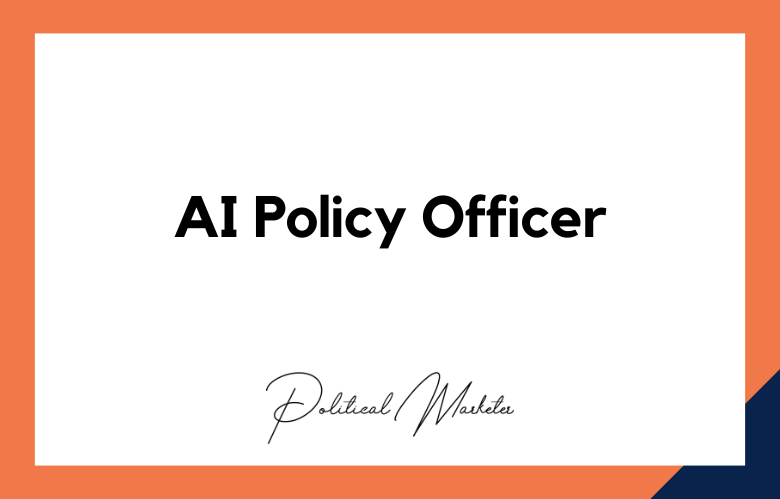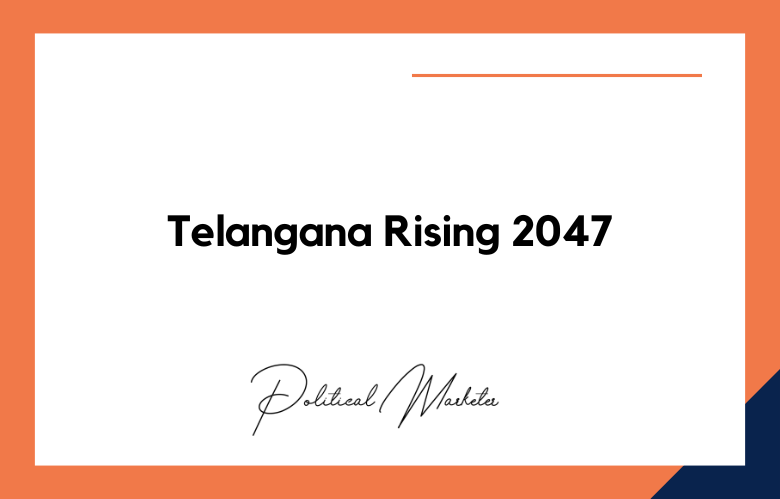In today’s data-driven world, supervised learning, a subset of machine learning, plays a pivotal role in numerous fields. Its impact is significantly felt in the political sphere. This paper delves into how supervised learning can analyze political campaigns.
Every vote tells you something about hope, frustration, or a desire for change. But when you zoom out, those individual choices start to form patterns. That’s where supervised learning becomes useful.
This isn’t just another buzzword. It’s a method that lets political campaigns use real, labeled data—like survey responses, past election results, or demographics—to predict what’s likely to happen next. Instead of guessing which voters might swing or which areas to target, campaigns use this data to make more innovative moves.
Think about it this way: if you’ve ever looked at voter turnout maps or issue-based heatmaps, you’ve already seen what supervised learning helps decode. It’s about assisting teams to avoid blind spots and focus on people who are persuadable or likely to take action if nudged.
Supervised Learning
Supervised learning is a powerful tool for analyzing political campaigns. It uses data from past elections to help predict the outcomes of future elections.
This data can be used to identify patterns in voting behavior and to develop strategies for targeting specific populations or areas to maximize the chances of success. Supervised learning also allows campaigns to test different messaging strategies and determine which ones are most effective with diverse groups of voters.
Data Collection
For supervised learning algorithms to work, they need a large amount of data about past elections and voter behavior. This data can come from many sources, including surveys, polls, focus groups, public records, and social media platforms like Twitter and Facebook.
By collecting this data, campaigns can gain valuable insights into the electorate and use this information to inform their decision-making process.
Modeling
Once the necessary data has been collected, it must be organized into a format supervised learning algorithms can use.
This process typically involves creating models representing different aspects of the election or campaign, such as voter demographics, geographic location, political party affiliation, etc. Algorithms can then use these models to identify voter behavior patterns and predict future outcomes.
Algorithm Selection
Once the appropriate models have been created, campaigns must select an algorithm best suited to their needs. Different algorithms have different strengths and weaknesses when predicting election outcomes. Hence, movements must choose one that will provide them with the most accurate results possible.
Popular algorithms include logistic regression, neural networks, support vector machines (SVMs), and random forests.
Training
After selecting an algorithm, it must be trained on the collected data to learn how to accurately predict election outcomes based on various factors such as demographics or voting history.
During this process, the algorithm is constantly being tweaked to optimize its performance and accuracy levels until it can make reliable predictions about future elections based on past trends and behaviors observed in the dataset used for training purposes.
Evaluation
Once an algorithm has been trained on a dataset, it must be evaluated against other datasets to ensure its predictions are accurate enough for practical use during a political campaign or election cycle.
During this evaluation phase, various metrics, such as precision-recall scores or cross-validation scores, measure how well an algorithm performs against unseen datasets that contain similar characteristics as those seen during training but not necessarily identical examples of them.
This helps campaigns understand whether their chosen algorithm has learned enough from their training dataset to accurately predict future election outcomes.
Deployment
When an algorithm passes all tests with flying colors, it is ready for deployment during actual political campaigns. At this stage, the model can be deployed directly onto existing systems such as websites, mobile applications, or even physical kiosks, depending on the campaign’s platform.
Once deployed, the model will begin predicting upcoming election results based on user-inputted information such as demographic details or voting history.
Understanding Supervised Learning
Before we delve into the application of supervised learning in political campaigns, let’s first understand what supervised learning entails. Supervised learning is a type of machine learning where an algorithm learns from labeled training data and uses this learning to predict outcomes for unseen data.
The ‘supervisor’ refers to providing the algorithm with example inputs and their desired outputs.
The Intersection of Politics and Data Science
In recent years, politics has increasingly turned towards data science for insights. Campaign strategies are no longer solely based on gut instinct or traditional polling. Instead, they are becoming more data-driven, employing sophisticated algorithms to understand voter behavior and trends.
How Supervised Learning Applies to Political Campaigns
Voter Profiling
One of the primary uses of supervised learning in political campaigns is voter profiling. By analyzing past voting behavior, demographic information, and other relevant factors, supervised learning can help create detailed profiles of potential voters.
Sentiment Analysis
Supervised learning can also analyze sentiment on social media posts, news articles, and online discussions. This can provide valuable insights into public opinion about a particular candidate or issue.
Predicting Election Results
Supervised learning algorithms can predict future election outcomes by training on historical election data. While these predictions are not always 100% accurate, they can provide valuable insights that can shape campaign strategies.
The Role of Supervised Learning in Campaign Strategy Development
Microtargeting and Personalization
Supervised learning enables microtargeting, which divides voters into small segments based on their characteristics and preferences. By predicting what issues are most likely to motivate different features of voters, campaigns can tailor their messages accordingly.
Forecasting Voter Turnout
Predicting voter turnout is another crucial aspect where supervised learning can be applied. By analyzing factors like past voting records, demographic data, and the political climate, campaigns can predict which voters are most likely to cast their ballots and focus their resources on these groups.
Supervised Learning Techniques Used in Political Campaigns
Regression Analysis
Regression analysis predicts a continuous outcome, such as the percentage of votes a candidate will receive. It helps understand the relationships between variables and how they impact the vote.
Classification Algorithms
Classification algorithms like Support Vector Machines (SVM) or Decision Trees categorize voters into groups. For example, they might be used to classify voters as ‘supporters,’ ‘undecided,’ or ‘opponents.’
Neural Networks
Neural networks, a form of deep learning, can be used for complex tasks like sentiment analysis. They’re particularly effective for analyzing unstructured data like text from social media posts.
The Growing Influence of Supervised Learning in Politics
As we’ve seen, supervised learning has immense potential to shape the future of political campaigns. From microtargeting voters to predicting election outcomes, it offers valuable insights that can significantly impact campaign strategies.
As data becomes increasingly integral to our lives, its role in politics is set to grow. Supervised learning in political campaigns represents a significant shift towards a more data-driven political approach. However, this powerful tool must be used responsibly, with a firm commitment to ethical considerations like privacy and transparency.
By harnessing the power of supervised learning while remaining mindful of these ethical considerations, political campaigns can use data to engage voters more effectively, ultimately strengthening our democratic processes.
Case Studies: Successful Applications of Supervised Learning in Political Campaigns
To highlight the power of supervised learning in political campaigns, let’s look at a few case studies where it has been successfully employed.
Obama’s 2012 Re-election Campaign
Barack Obama’s 2012 re-election campaign extensively used data analytics and supervised learning. The campaign team built a predictive model that helped them identify, target, and persuade undecided voters.
Brexit Referendum
Supervised learning was used to analyze social media sentiment during the Brexit referendum. This helped campaigners understand public opinion and tailor their strategies accordingly.
Challenges and Ethical Considerations
While supervised learning offers many benefits for political campaigns, it has challenges and ethical considerations. Data privacy, the potential for manipulation, and the accuracy of predictions are all critical factors to consider.
The Future of Political Campaigns
Supervised learning in political campaigns will likely become more prevalent in the digital age. However, as with any powerful tool, using it responsibly and ethically is crucial.
Supervised learning offers a powerful way to analyze and understand the complexities of political campaigns. By harnessing this tool, political strategists can better understand voter behavior and public sentiment, helping them run more effective, data-driven campaigns.
However, as we embrace this technology, we must also be mindful of its ethical implications and strive to use it in a manner that respects privacy and promotes transparency. Ultimately, these tools should always be used to encourage a more informed and engaged electorate.
Conclusion:
Using supervised learning techniques to analyze political campaigns can provide valuable insights that help movements create more efficient and targeted strategies.
However, it should be kept in mind that this is merely a tool, and careful consideration should be given to the data sets, algorithms, and models used to ensure that they are unbiased and accurate. Using supervised learning to understand the electorate’s preferences, political campaigns can create targeted strategies to help them win.
Supervised Learning for Political Campaigns: FAQs
What’s supervised learning in a political campaign?
It’s a way for machines to learn from labeled examples. For instance, if you give it data showing how certain voters acted in past elections, it starts spotting patterns. Then it can make predictions about what similar voters might do next.
How is it different from other AI methods?
This method uses examples with known outcomes. You’re not asking it to guess from scratch—you’re showing it what’s already happened and letting it learn from that.
Why do campaigns care about this?
Because decisions get better when they’re backed by real patterns, not just instincts. You can spend less time guessing and more time acting.
What kind of data do campaigns use?
They might include age, location, income, voting history, past survey responses, or even how people reacted to previous events or messaging.
Can it help find swing voters?
Yes. These tools can highlight people who seem unsure or could be persuaded. That means teams can show up where it really counts.
How reliable are the predictions?
That depends on the data. If it’s clean, current, and labeled well, the system learns faster and guesses better.
Can this help raise more money?
It can. By looking at donation history, it can flag who’s likely to give again or who might respond to a new pitch.
Is this only useful in national elections?
Not at all. Local campaigns use it too. Any effort that needs to target people or track behavior can benefit from it.
What’s the value early in a campaign?
It helps you set priorities—who to talk to, where to show up, and what kind of message might work best before spending big.
Can this improve ad targeting?
Yes. If you know who’s most likely to respond, you can tailor your ads to them. That means less waste and more impact.
What kind of algorithm is commonly used?
Logistic regression is a popular choice. It gives you probabilities, like how likely someone is to support your candidate or attend a rally.
Do you need a big data team for this?
Not necessarily. Some tools come ready to use. But having someone who understands data will help you avoid rookie mistakes.
Can it show if the campaign’s working?
Yes. It can track if people are shifting support or getting more engaged, based on how they respond over time.
Could it help boost voter turnout?
Definitely. If it spots people who often skip elections, you can reach out with the right message and maybe change that.
What happens if your data is messy?
The model won’t work well. It might give you bad guesses or miss important trends. Clean, consistent data makes all the difference.
How do you protect people’s privacy?
Use anonymized data. Don’t store anything you don’t need, and make sure your tools don’t leak anything sensitive.
Is this approach ethical?
It depends on how you use it. If you’re honest about it and don’t use it to deceive, it’s a more innovative way to work with data.
What if the model gets it wrong?
It happens. That’s why human judgment still matters. Use these tools to guide—not replace—your decisions.
Can it help test different messages?
Yes. You can try different ideas, see how people respond, and then fine-tune what you say next.
Where is this all going?
We’ll likely see faster, more innovative tools that work in real time. But no matter how good the tech gets, human insight will still matter most.










